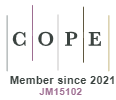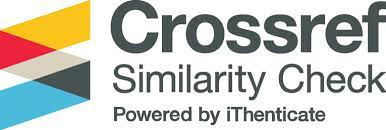Real Earnings Management as a Tool for Big Bath Creating in Industrial Companies
DOI:
https://doi.org/10.18778/2391-6478.3.31.02Keywords:
real earnings management, big bath, industrial enterprises, Warsaw Stock Exchange, Roychowdhury modelsAbstract
The purpose of the article/hypothesis: The aim of the paper is to show the importance of the implemented real earnings management (REM) in the intentional shaping of large losses in public industrial enterprises listed on the Warsaw Stock Exchange.
Methodology: The basic method of assessing the REM activities was compliant with the Roychowdhury methodology, enabling the estimation of the abnormal levels of: operational cash flows, production costs and discretionary expenses. In turn, the modified verision of iosik model was used to assess the impact of REM practices on the frequency of large losses in tested sample.
Results of the research: The obtained results show that the REM implemented by means of overproduction, granting above-average rebates and a liberal approach in the field of trade credits may be considered an important path of intentional deepening of the net loss in public industrial companies.
Downloads
References
Barth, M.E., Landsam, W.R. and Lang M.H. (2008). International Accounting Standards and Accounting Quality. Journal of Accounting Research, 46(3).
Google Scholar
DOI: https://doi.org/10.1111/j.1475-679X.2008.00287.x
Chakravarty, A., Grewal, R. (2011). The Stock Market in The Driver’s Seat! Implications for R&D and Marketing. Management Sciences, 57(9).
Google Scholar
DOI: https://doi.org/10.1287/mnsc.1110.1317
Comporek, M. (2019). Urealniony wymiar oceny zarządzania zyskiem w przemysłowych spółkach giełdowych. Przedsiębiorczość i zarządzanie, XX(1), cz. 1.
Google Scholar
Comporek, M. (2020). Kształtowanie wyniku finansowego przedsiębiorstw. Wymiary – modele – ocean. Łódź: Wydawnictwo Uniwersytetu Łódzkiego.
Google Scholar
Ewert, R. and Wagenhofer, A. (2005). Economics effect of tightening accounting standards to restrict earnings management. The Accounting Review, 80(4).
Google Scholar
DOI: https://doi.org/10.2308/accr.2005.80.4.1101
Hamrol, M., Czajka, B. i Piechocki, M. (2004). Upadłość przedsiębiorstwa – model analizy dyskryminacyjnej. Przegląd Organizacji, 6.
Google Scholar
DOI: https://doi.org/10.33141/po.2004.06.09
Kiziukiewicz, T., red. (2009). Zasoby i procesy w rachunkowości jednostek gospodarczych. Warszawa: Difin.
Google Scholar
Kmieć, D. (2015). Zastosowanie modelu logitowego do analizy czynników wpływających na bezrobocie wśród ludności wiejskiej. Ekonomika i Organizacja Gospodarki Żywnościowej, 110.
Google Scholar
DOI: https://doi.org/10.22630/EIOGZ.2015.110.18
McVay, S. (2006). Earnings Management Using Classification Shifting: An Examination of Core Earnings and Special Items. The Accounting Review, 81(3).
Google Scholar
DOI: https://doi.org/10.2308/accr.2006.81.3.501
Mizik, N. (2010). The Theory and Practice of Myopic Management. Journal of Marketing Research, XLVII.
Google Scholar
DOI: https://doi.org/10.1509/jmkr.47.4.594
Piosik, A. (2016). Kształtowanie wyniku finansowego przez podmioty sprawozdawcze w Polsce. Katowice: Wydawnictwo Uniwersytetu Ekonomicznego w Katowicach.
Google Scholar
Piosik, A., red. (2013). Kształtowanie zysków podmiotów sprawozdawczych w Polsce. MSR/MSSF a ustawa o rachunkowości. Warszawa: Wydawnictwo C.H. Beck.
Google Scholar
Roychowdury, S. (2006). Earnings Management through Real Activities Manipulation. Journal of Accounting and Economics, 42.
Google Scholar
DOI: https://doi.org/10.1016/j.jacceco.2006.01.002
Schipper, K. (1989). Commentary on Earnings Management. Accounting Horizons, 3(4).
Google Scholar
Sellami, M. (2015). Incentives and Constraints of Real Earnings Management: The Literature Review. International Journal of Finance and Accounting, 4(4).
Google Scholar
Tokuga, Y. and Yamashita, T. (2011). Big Bath and Management Change Big Bath and Management Change. Working Paper no. 123, Kyoto University.
Google Scholar
Vladu, A. (2015). Managerial preferences between accrual-based versus real earnings management. Hyperion International Journal of Econophysics & New Economy, 8(2).
Google Scholar
Downloads
Published
How to Cite
Issue
Section
License

This work is licensed under a Creative Commons Attribution-NonCommercial-NoDerivatives 4.0 International License.














